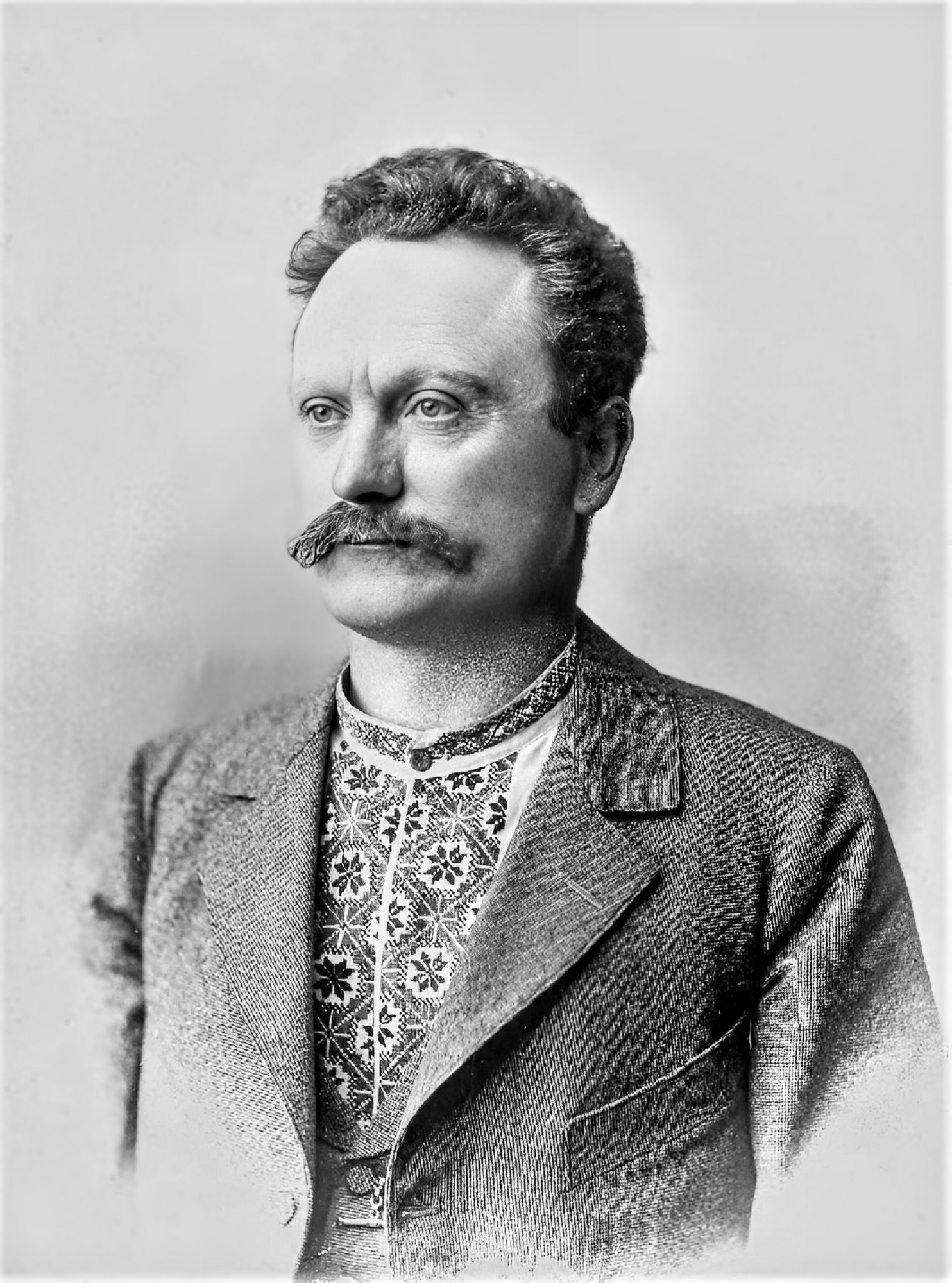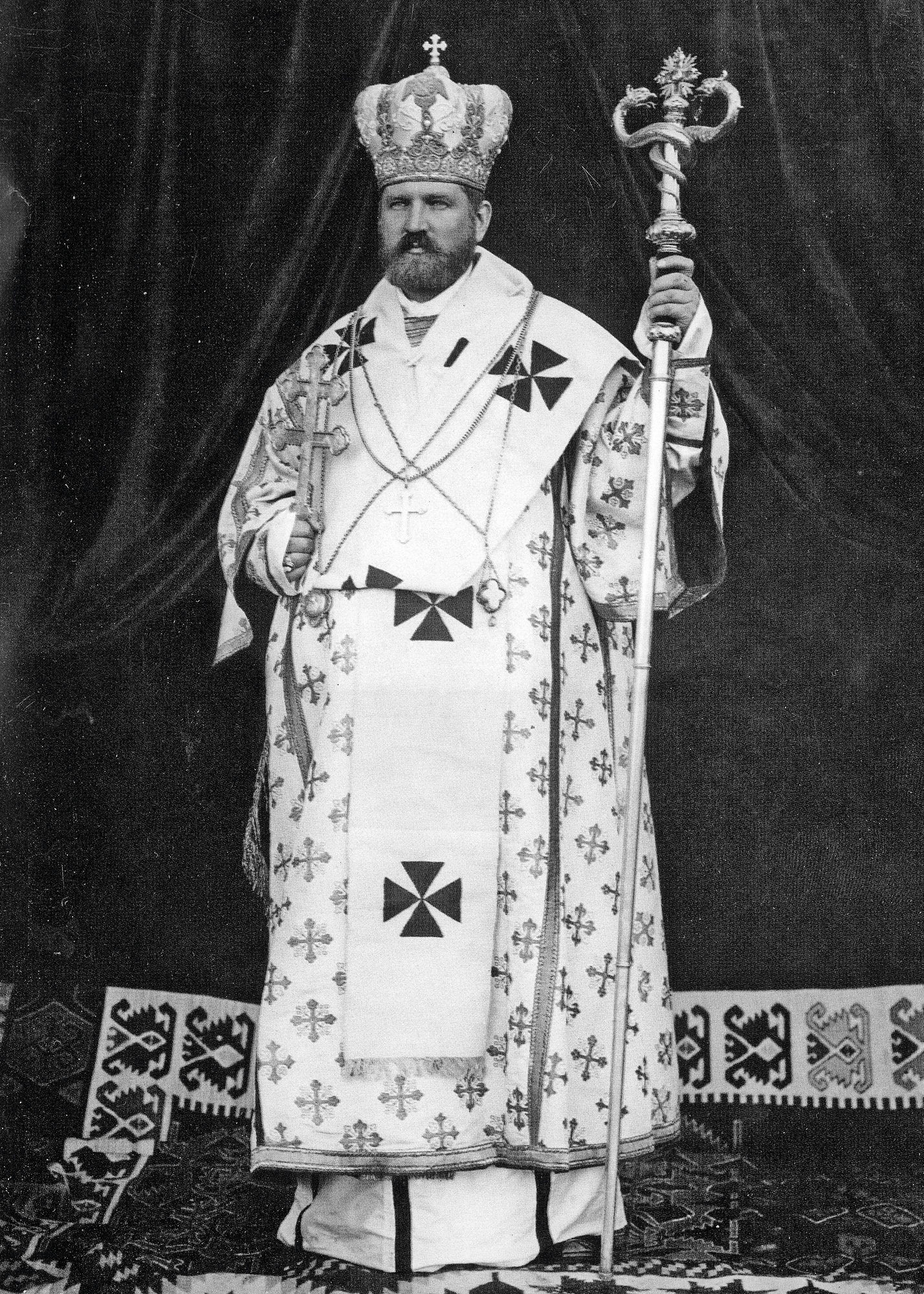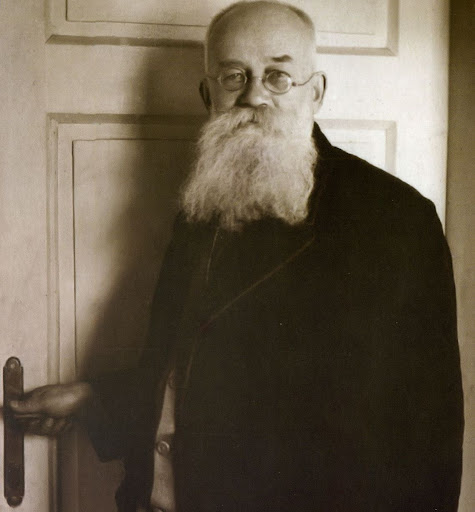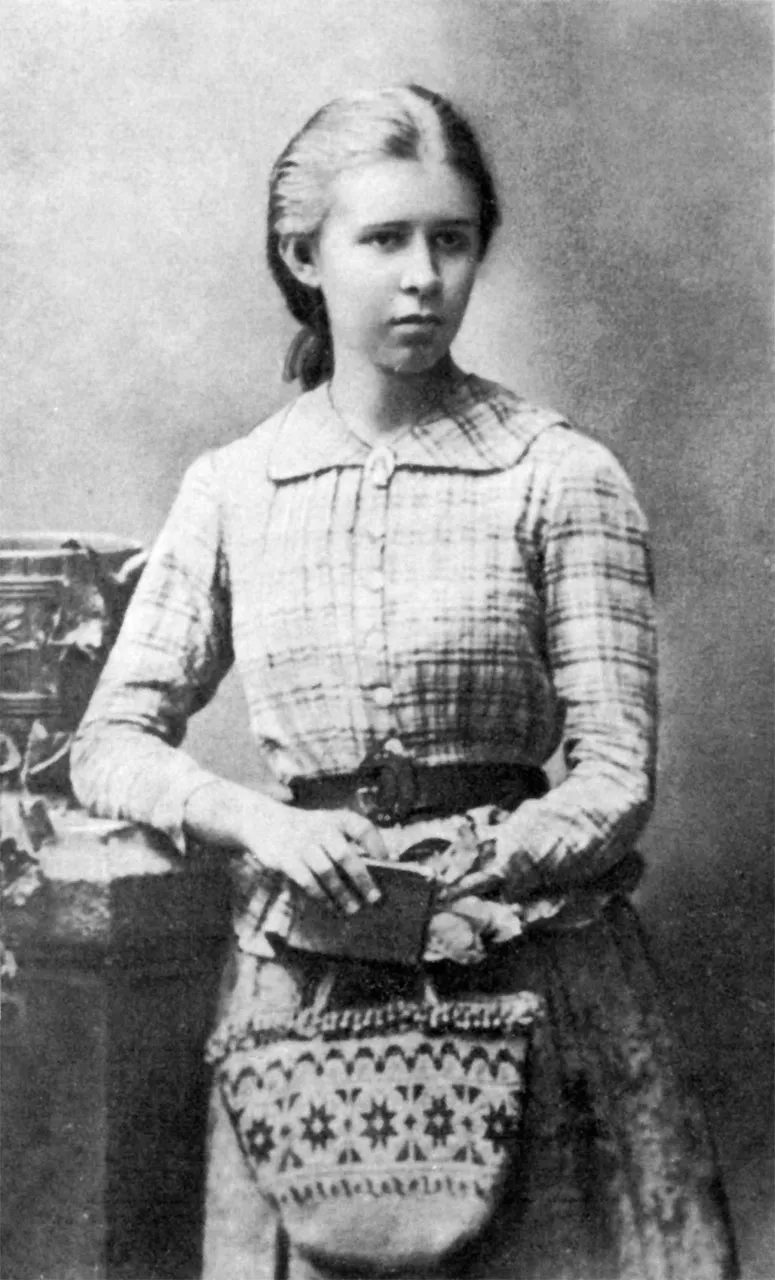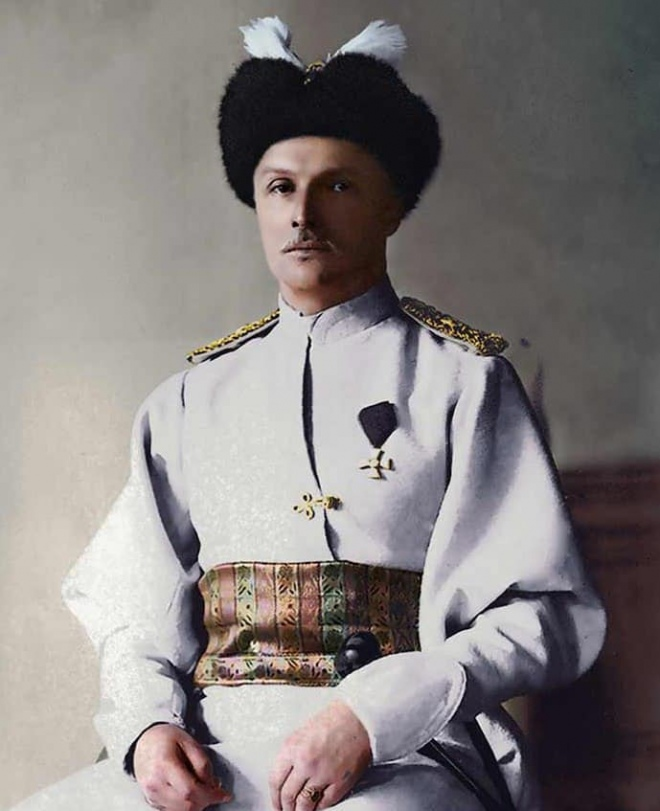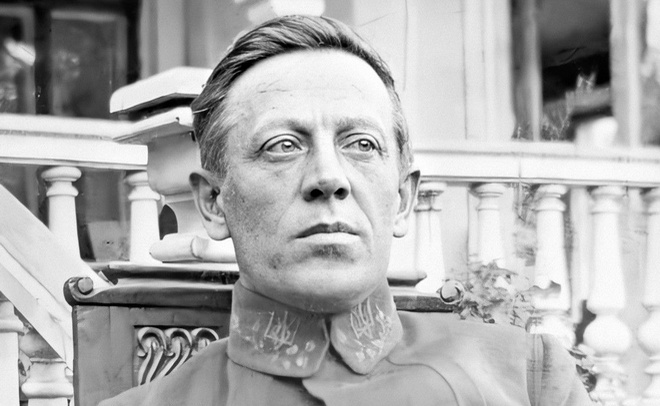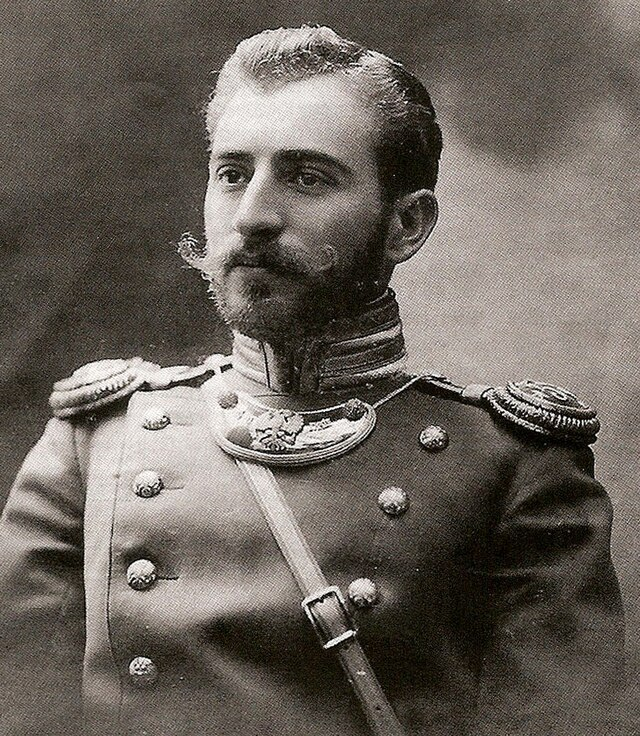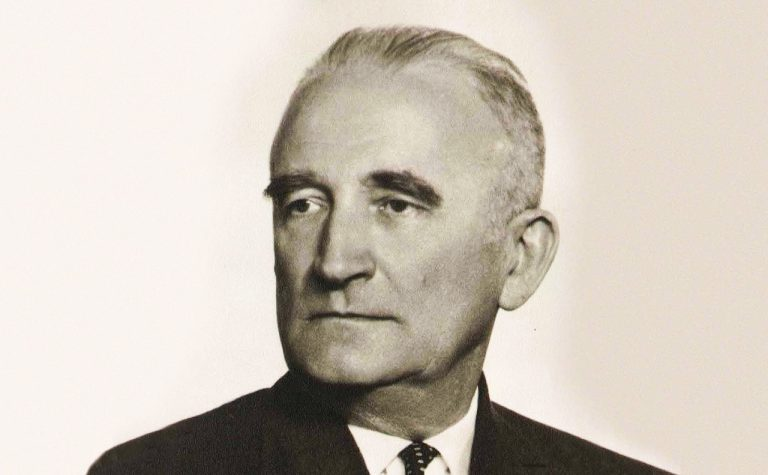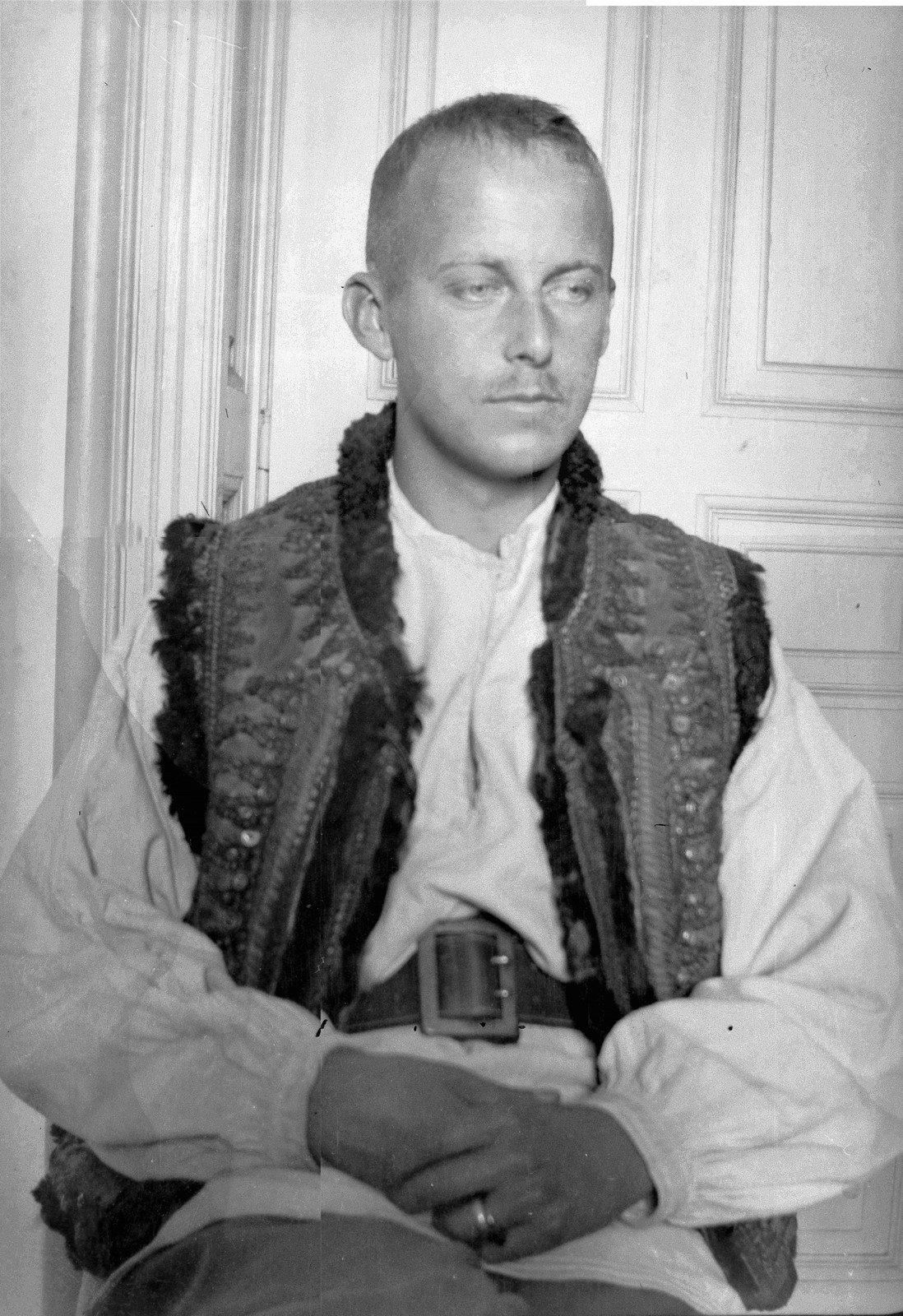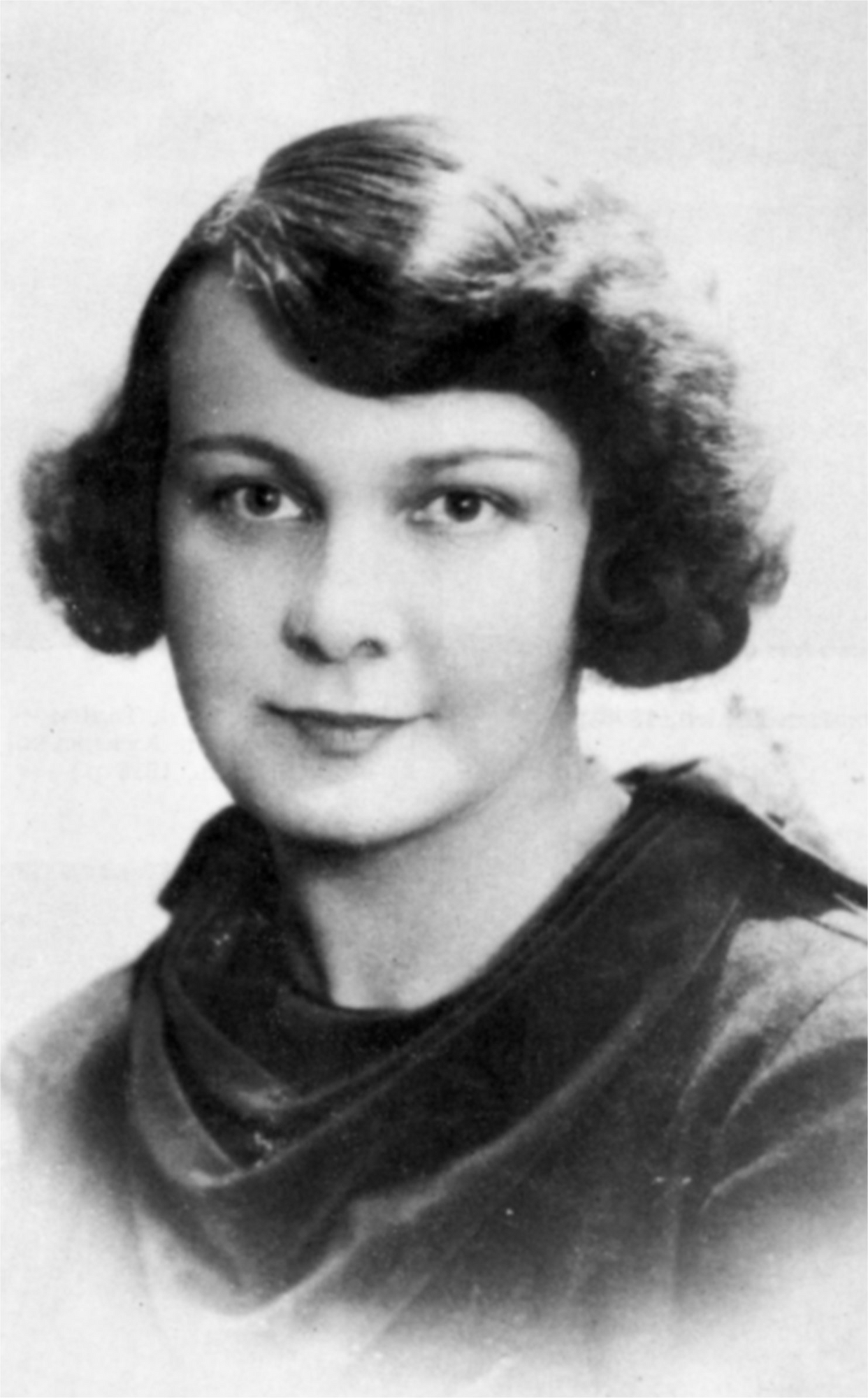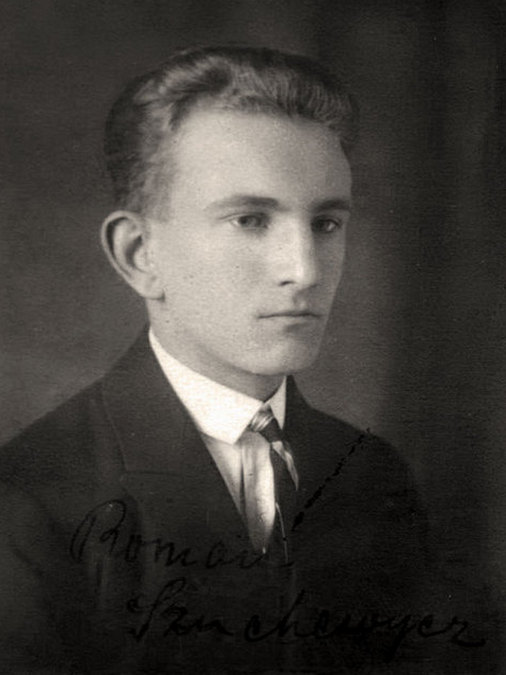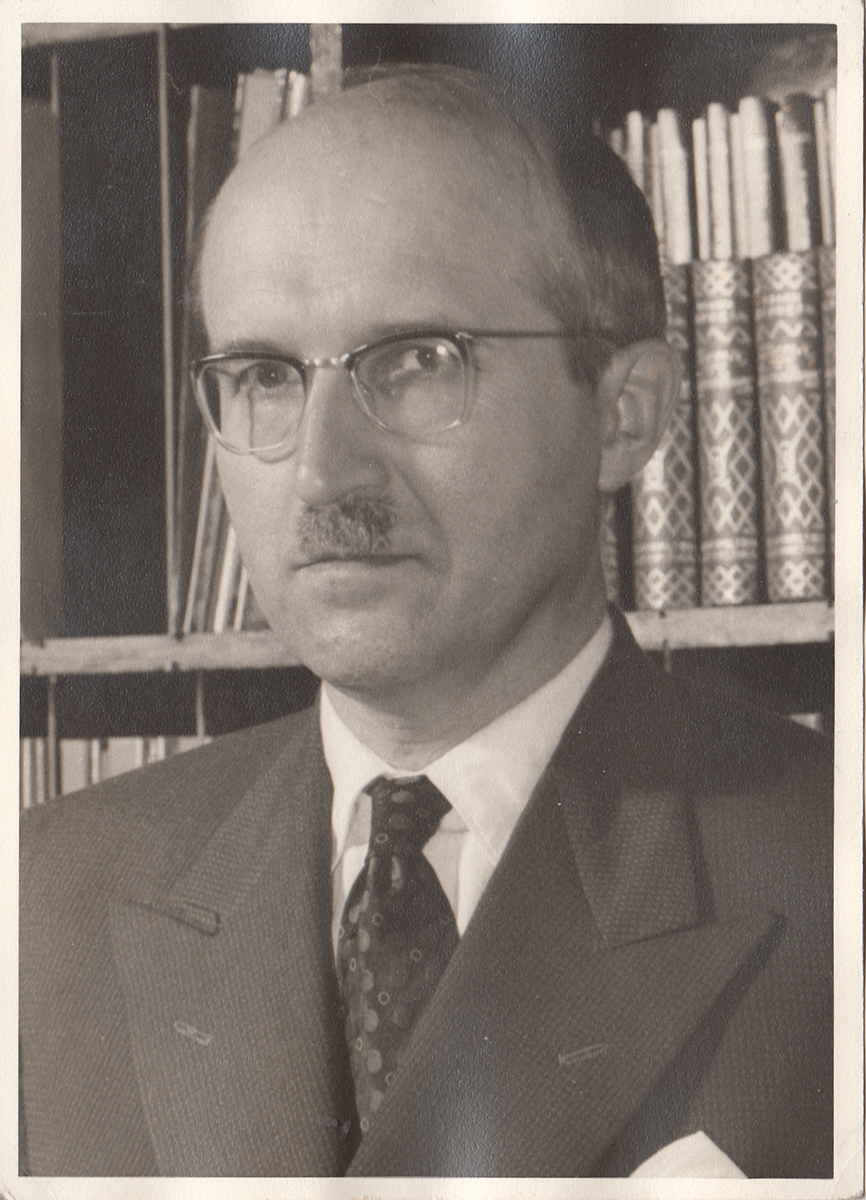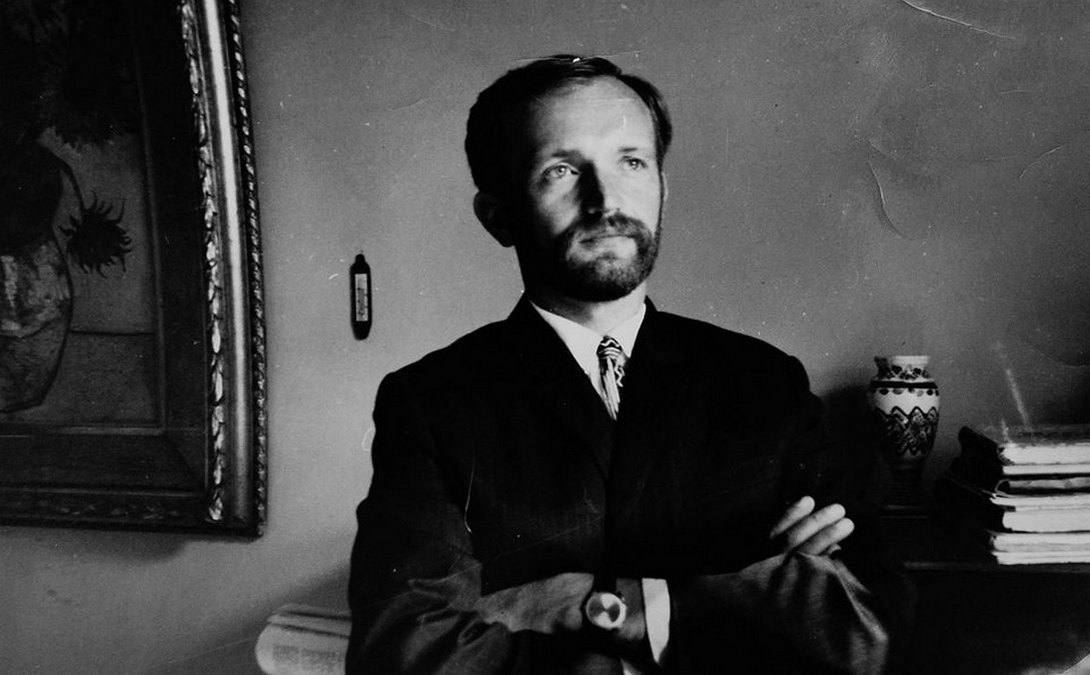News
Fighters for Ukraine's independence: 33 figures who went down in history
Ukraine's independence, the 33rd anniversary of which we celebrate today, came at a great cost to our people. Many people sacrificed their entire lives to ensure that our state could take place and take its place in the world.
OBOZ.UA offers to recall the names of 33 figures who left their mark on the history of Ukrainian statehood. We thank each of them for the fact that Ukraine has become an independent state and, despite everything, is ready to develop and move toward prosperity.
Ivan Franko (1856-1916)
Writer and scholar, politician. Co-founder of the Ruthenian-Ukrainian Radical Party, which began its activities in 1890 in Lviv. He supported the idea of the unity of eastern and western Ukrainian lands. He insisted that the term "Ukrainians" rather than "Rusyns" be used in Galicia. He promoted the idea of a united Ukrainian nation without division into regions of origin.
Kost Levytskyi (1859-1941)
A Galician politician and lawyer who was one of the first to use documents written in Ukrainian. He headed the Ukrainian Sejm Club in the Austrian Parliament. On October 31, 1918, the Lviv delegation of the Rada, led by Levytskyi, decided to launch an armed uprising. In November-December 1918, he was the head of the State Secretariat of the ZUNR. After the proclamation of the Ukrainian state on June 30, 1941, he headed the Council of Seniors.
Yevhen Petrushevych (1863-1940)
Ukrainian lawyer and public and political figure. He was an active member of the Prosvita society and a fighter against Muscophilia. He was a member of the Parliament of the Austro-Hungarian Empire. From the beginning of the First World War, he became a member of the Main Ukrainian Council. He headed the Ukrainian National Council of the ZUNR. After the solemn proclamation of the Act of Unification of the UPR and ZUNR in Kyiv, he became a member of the Directory. From June 1919, Petrushevych combined the duties of president and head of government, receiving special dictatorial rights. He opposed Petliura's alliance with Poland and supported the UGA's agreements with the White Guards.
Vasyl Lypkivskyi (1864-1937)
Priest, first metropolitan of the Ukrainian Orthodox Autocephalous Church. In April 1917, he chaired the Kyiv Diocesan Congress of Clergy and Laity, which decided to revive Ukrainian church traditions and democratize church life. The autocephalous church was revived in 1921, and Lypkivskyi was entrusted with its leadership.
Andrii Sheptytskyi (1865-1944)
Priest, Metropolitan of the Ukrainian Greek Catholic Church, philanthropist. He consistently defended the interests of Ukrainian statehood and culture. He was a member of the Galician Sejm and the House of Lords in Vienna. He promoted the opening of Ukrainian gymnasiums and the Ukrainian University in Lviv. In 1914, he submitted a secret memorandum to the Austrian government on the need to create a Ukrainian state. He supported the creation of the ZUNR but urged priests not to interfere in politics. During the Second World War, he condemned Nazi aggression and hid Jews in Greek Catholic monasteries and even in the metropolitan's residence.
Mykhaylo Hrushevskyi (1866-1934)
Historian and political activist. Chairman of the Taras Shevchenko Scientific Society in Lviv, Head of the Department of History at Lviv University. As a scholar, he created more than 2000 works, the main of which is the multi-volume History of Ukraine-Rus', which Hrushevsky worked on in 1898-1936. Because of his undisputed authority, he was elected chairman of the Ukrainian Central Rada in Kyiv in 1917. He participated in the creation of the Universals. The Fourth Universal proclaimed the independence of the Ukrainian People's Republic on January 22, 1918.
Lesia Ukrainka (1871-1913)
Ukrainian writer, translator, folklorist, and public figure. In her work, she combined a deep knowledge of folk motifs with advanced political ideas of gaining their statehood, preserving language and traditions, as well as spreading education, and awakening national consciousness. She described Ukrainians not as part of the Russian Empire, but as an independent people with their history and culture. And, of course, with the right to self-determination, for which they must fight tirelessly. During her life, she wrote about 270 poems, and several poems, and composed more than 20 plays. Many of them were later translated many times. However, the writer herself translated many works of European literature into Ukrainian. Lesia Ukrainka made a great contribution to the development of the women's movement. By her example, she inspired many women to take an active part in public life.
Mykola Mikhnovskyi (1873-1924)
The lawyer, publicist, and politician is considered to be one of the main ideologists of Ukrainian independence, church autocephaly, and de-Russification. He was the founder of the Ukrainian People's Party. He insisted on confederative, or equal, relations with Russia. He outlined his views in his speech "Independent Ukraine," which caused a real scandal in 1900. In 1905, he drafted the Ukrainian Constitution.
Pavlo Skoropadskyi (1873-1945)
Political and military figure, monarchist in his views. During the Ukrainian People's Republic he was engaged in the Ukrainization of the army. He was an opponent of socialist policy. However, after the overthrow of the Central Rada with the support of the Germans, he became Hetman of the Ukrainian state. Skoropadskyi's merits include the founding of the Ukrainian Academy of Sciences and several educational and cultural institutions. He renounced his broad powers in favor of the Directorate headed by Volodymyr Vynnychenko.
Augustyn Voloshyn (1874-1945)
Religious, cultural, and political activist, a Greek Catholic priest of the Mukachevo diocese, who is called the father of the Ukrainian revival in Transcarpathia. He opposed both Russian and Hungarian influence. He was the founder of the People's Christian Party and a member of the Czechoslovak parliament. On March 15, 1939, Voloshyn was elected president of Carpathian Ukraine. A few days later, the country was occupied by Hungarian troops, and the head of state was forced to flee abroad.
Oleksandr Koshyts (1875-1944)
Conductor and accompanist, organizer, and head of the Ukrainian Republican Chapel, which, on behalf of Simon Petliura, was engaged in the dissemination of Ukrainian culture in Europe and abroad. He performed with the choir in Czechoslovakia, Austria, Switzerland, France, Belgium, the Netherlands, Great Britain, Germany, Poland, and Spain. In 1922, the musicians went on a tour to America, during which the folk song "Shchedryk" arranged by Mykola Leontovych was performed in the United States for the first time. After that concert, the song became a symbol of Christmas all over the world.
Stepan Rudnytskyi (1877-1937)
Geographer, cartographer, and ethnographer. Researcher and compiler of data on Ukrainian physical, political, and military geography. In 1927, he founded and headed the Ukrainian Research Institute of Geography and Cartography. During his career, he wrote 150 scientific works, including textbooks for schools. Rudnytsky's works were translated into French, English, Czech, Italian, Hungarian, and Swedish. He defended the ideas of Ukrainian independence and statehood. He was murdered during the Great Terror in the infamous Sandarmokh tract, the site of mass executions of intellectuals.
Symon Petliura (1879-1926)
Ukrainian statesman, military and political figure, publicist, literary and theater critic. He is considered the founder of the Ukrainian Armed Forces. He was persecuted for his political views since his gymnasium days. The main idea of Petliura's revolutionary activity was the independence of Ukraine. In 1917, he was elected chairman of the Ukrainian Front Council. He also participated in the work of the Central Rada. In the spring of 1919, Symon Petliura was elected Chairman of the Directory. The politician clashed with Volodymyr Vynnychenko because he defended the need for Ukraine to have its army. After the defeat of the liberation movement, he went abroad, where he continued to promote the idea of Ukrainian statehood, hoping that it would be restored.
Dmytro Dontsov (1883-1973)
Publicist and philosopher, creator of the idea of Ukrainian integral nationalism. A radical opponent of communism, Russian imperialism, and the forerunner of the Organization of Ukrainian Nationalists and the Ukrainian Insurgent Army. He called for a Western orientation and a cosmopolitan view of the world. He called Ukrainian statehood the highest goal and urged to put aside any political differences to achieve it.
Vyacheslav Lypynskyi (1882-1931)
Ideologist of Ukrainian monarchism. Lypynsky came from a Polish family, but he became interested in the Ukrainian idea and joined the national movement. He developed a monarchical-hetman concept of the state and promoted the idea of a class society with a constitutional monarchy.
Ivan Ohienko (1882-1972)
The religious leader took an active part in the creation of the Ukrainian Autocephalous Orthodox Church. In 1943 he was appointed its metropolitan. He was actively engaged in linguistics, wrote more than 300 works on this topic, and developed Ukrainian spelling. He translated the Bible into Ukrainian. In 1951, at the Extraordinary Council in Winnipeg, he was elected Primate of the Ukrainian Greek Orthodox Church in Canada. He founded and headed the Ukrainian National University.
Petro Bolbochan (1883-1919)
Military leader, colonel of the UPR Army. Participant of the Soviet-Ukrainian war, anti-Hetman uprising. In 1917, he formed the 1st Ukrainian Republican Regiment. He was the military commandant of Volyn. In 1918, he suppressed the January Bolshevik uprising in Kyiv, and defended Crimea from the Reds' offensive, but was forced to retreat. He stood on the position of inadmissibility of agreements with the Bolsheviks and criticized Ukrainian politicians for this. He was shot by a decision of the UPR military field court.
Noman Chelebidzhikhan (1885-1918)
The organizer of the first Kurultai in Simferopol, head of the government of the Crimean People's Republic proclaimed in 1917. He maintained ties with the Ukrainian Central Rada. During the Congress of Peoples of Russia in September 1917, the delegation sent to Kyiv from the Muslim Executive Committee supported the decision of the Congress to transform Russia into a federation of equal republics. Celebidzhikhan also welcomed the creation of the Ukrainian People's Republic.
Dmytro Vitovskyi (1887-1919)
One of the leaders of the November 1918 ranks in Lviv. He served as the Minister of War of the ZUNR. He was involved in the creation of the Ukrainian Galician Army and recruited up to 100 thousand people. He proposed a military alliance with the UPR and signed a treaty of unification with it in Fastiv.
Andrii Melnyk (1890-1964)
Military and political figure, co-founder of the Ukrainian National Committee, chief of staff of the current UPR army. Although he did not take part in the first congress of the Organization of Ukrainian Nationalists, he is still considered one of its founders. After the assassination of Yevhen Konovalets, he came into conflict with Stepan Bandera and headed the moderate wing of the organization. In his attempts to establish a Ukrainian state, he appealed to Hitler, suggesting that he create Ukrainian units in the German army. But the Nazis did not plan to create a Ukrainian administration, so Melnyk came to the attention of the Gestapo. Later, he enlisted the support of other Western Ukrainian figures and began to demand that Hitler stop his policy in Ukraine. In January-October 1944, the Nazis held Melnyk in the Sachsenhausen concentration camp. After the war, he emigrated. In 1957, he proposed the idea of creating the World Union of Ukrainians.
Yevhen Konovalets (1891-1938)
He is considered one of the key ideologists of Ukrainian nationalism. Colonel of the UPR Army, commander of the Sich Riflemen, member of the Riflemen's Council, commander of the UVO, head of the Leadership of Ukrainian Nationalists, founder and first head of the OUN. At the beginning of the First World War, he was taken prisoner by Russia, and after his release, he founded the Galician-Bukovyna Sich Riflemen's Kuren, later one of the most effective units of the UPR, with other prisoners. In 1929, he became one of the founders of the OUN and was elected its chairman. He tried to raise the Ukrainian issue in the League of Nations and was killed by an NKVD agent.
Josyf Slipyj (1892-1984)
The head of the Ukrainian Greek Catholic Church, which he headed in 1944, at the time of the beginning of the Soviet persecution. He led the faithful underground. However, on the night of April 11, 1945, he was arrested and spent almost 10 years in camps in Siberia, Krasnoyarsk Krai, and Mordovia. After his release, he was forbidden to return to Lviv and was forced to take a job as a watchman in a nursing home. There he continued his pastoral work: he corresponded with believers, secretly ordained priests, and wrote epistles. For the second time, Josyf Slipyj was arrested in 1957 and received a 7-year sentence, but in 1963 he was released at the request of Pope John XXIII and went to Rome. In 1963, he spoke at the Second Vatican Council and succeeded in obtaining patriarchal status for the Lviv-Halych Eparchy. In 1966, he resumed the activities of the Ukrainian Catholic University in Rome. He visited Ukrainian communities. The metropolitan died on September 7, 1984, and in 1992 was solemnly reburied in Lviv.
Vasyl Vyshyvanyi (1895-1948)
The politician's real name was Wilhelm Franz Joseph Karl von Habsburg-Lorraine, also known as Wilhelm Franz of Austria. He was a member of the imperial Habsburg family, but from his youth, he became interested in Ukrainian history and culture. When he became a senator of the Austro-Hungarian parliament at the age of 21, he actively lobbied for the interests of representatives of Ukrainian territories. He served in the Ulaanbaatar regiment, which consisted mainly of Ukrainians. He had a large collection of embroidered shirts given to him, which he wore all the time, earning him the Ukrainian name Vasyl Vyshyvanyi. He entered it in his passport in 1918. He defended the idea of an autonomous principality of Ukraine under the protectorate of Austria-Hungary. In 1917-1918, he fought with the legion of Ukrainian Sich Riflemen in the south. He headed the Department of Foreign Relations of the UPR Army. He was kidnapped by Soviet spies and died in a Kyiv prison from tuberculosis.
Olena Teliha (1906-1942)
Ukrainian writer and active participant in the national movement. She worked in the leadership of the OUN. In 1939-1941, she headed the Zarevo Literary and Artistic Society in Krakow. At the end of October 1941, she joined one of the OUN's marching groups and came to Kyiv, in particular, to take part in the founding of the Ukrainian National Council. She became the head of the Union of Ukrainian Writers. She disobeyed the order of the occupying German administration to stop working on the magazine Litavry and was shot in February 1942 in Babyn Yar.
Stepan Bandera (1909-1959)
Ukrainian revolutionary, one of the most radical and prominent ideologues of the nationalist movement, head of the OUN (b) leadership. In 1932-1933, he was a member of the leadership of the OUN Regional Executive and organized terrorist attacks against the Polish authorities. After the split of the OUN, he opposed the alliance with the Nazis and called for a radical underground struggle. In June 1941, he helped draft the Act of Restoration of the Ukrainian State, for which he was arrested by the Germans and sent to a concentration camp. He was also active against the Soviet regime, in particular, he took revenge for the Holodomor and terror against Ukrainians. After the war, he lived in exile and continued to lead the OUN. He was fatally poisoned by a Soviet spy and NKVD agent in Munich.
Oleh Olzhych (1907-1944)
Ukrainian poet, political and public figure, head of the cultural sector, and later deputy head of the OUN leadership. In 1938-1939 he took an active part in the development of Carpathian Ukraine. During 1939-1941, he headed the OUN Revolutionary Tribunal. He participated in the formation of the local administration and police in Kyiv. In January 1944, after the arrest of Andriy Melnyk, he took over as Chairman of the OUN leadership. He was killed by the Gestapo.
Roman Shukhevych (1907-1950)
A political and military figure of the Ukrainian national revolutionary liberation movement, general-corporal of the Ukrainian Insurgent Army. In August 1943, he chaired the third Extraordinary Great Assembly of the OUN, which adopted a detailed program of the organization. He called for the unification of all supporters of the Ukrainian national idea. He built the UPA on the principles of a regular army.
Taras Bulba-Borovets (1908-1981)
An activist of the Ukrainian insurgency during the Second World War. One of the co-founders of the underground organization Ukrainian National Revival, which aimed to conduct educational and cultural work among young people. In 1940, he was sent to Volyn to form the Polissya Sich and the following year recruited 10,000 fighters to join it. In August 1941, these forces captured the town of Olevsk in the Zhytomyr region and founded the Olevsk Republic there. After the arrival of the Nazis, he and his associates organized partisan resistance, freed people from forced labor, and organized sabotage. He demanded that the occupation administration recognize Ukraine's independence and release Ukrainian political prisoners. In 1948, he moved to Canada, where he published underground literature, including historical books, which he smuggled into Ukraine.
Yaroslav Stetsko (1912-1986)
Political and military figure, active member of the OUN. He was one of the initiators of the establishment of the OUN Revolutionary Leadership in Krakow in February 1940. He joined the Banderite wing of the Organization and was elected its deputy leader. In June 1941, Stetsko convened the National Assembly in Lviv, which proclaimed the Act of Restoration of the Ukrainian State. Stetsko was elected prime minister of the Ukrainian State Government. The Nazi administration demanded that this act be withdrawn, but the OUN refused. Stetsko was arrested for this. After the war, he emigrated. In 1946, he headed the Anti-Bolshevik Bloc of Peoples. He worked against communist regimes and exposed their crimes. He signed a cooperation agreement with the Chinese Anti-Communist League.
Vasyl Makukh (1927-1968)
Member of the Ukrainian resistance movement in the USSR, political prisoner, and UPA soldier. After the Second World War, he was sentenced to 10 years in camps for participating in the Ukrainian insurgency, but after his release, he continued his political activities. In 1968, on November 5, on the eve of the anniversary of the Bolshevik coup, he committed an act of self-immolation in Bessarabka in Kyiv, during which he shouted "Long live free Ukraine!" and "Down with the occupiers!". In the modern history of Ukraine, this was the first act of self-sacrifice against national oppression.
Levko Lukyanenko (1928-2018)
Ukrainian politician and public figure, diplomat, writer, lawyer, and Soviet dissident. He organized the Ukrainian Workers' and Peasants' Union, which advocated the constitutional separation of Ukraine from the USSR. In January 1961, he was sentenced to death for "anti-Soviet agitation and propaganda," but the sentence was commuted to 15 years in camps. After his release, he became one of the 10 founders of the Ukrainian Helsinki Group. For this, he received another 10 years in camps and 5 years in exile. He served his sentence in Mordovia, the Urals, and Siberia. He was pardoned in 1988. In March 1990, he was elected to the Verkhovna Rada of Ukraine, where he became one of the authors of the Act of Independence of Ukraine.
Vyacheslav Chornovil (1937-1999)
Politician, public figure, publicist, literary critic. He took an active part in the Sixties movement and dissidents and published the underground magazine, Ukrainian Herald. He contributed to the creation of the Ukrainian Helsinki Group and became a member of it. He was an active participant and chairman of the People's Movement of Ukraine. He served several prison terms for "anti-Soviet propaganda." In total, Chornovil had to serve 17 years in prison. From 1990 to 1992, he headed the Lviv Regional Council and was a member of the Verkhovna Rada of the first three convocations. In the first presidential election in independent Ukraine, he came in second place, losing to Leonid Kravchuk.
Vasyl Stus (1938-1985)
Poet, representative of the Ukrainian cultural movement of the Sixties, dissident, and political prisoner. He began his career as a Ukrainian language teacher in the Donetsk region and literary editor of the newspaper Socialist Donbas. After entering graduate school, he moved to Kyiv, where he organized his famous protest against the arrests of dissidents. On September 4, 1965, during the premiere of Serhiy Parajanov's film Shadows of Forgotten Ancestors in a packed hall of the Ukraine Cinema, Stus addressed the audience: "Whoever is against tyranny, stand up!" and he was the first to stand up. For this, he was expelled from the university and banned from working and publishing. After serving his first arrest for anti-Soviet activities, he joined the Helsinki Group for the Defense of Human Rights. He was arrested for the second time in May 1980, and on September 4, 1985, he died in a prison cell in the Perm Territory in Russia.
Subscribe to OBOZ.UA channels on Telegram and Viber to keep up with the latest events.







